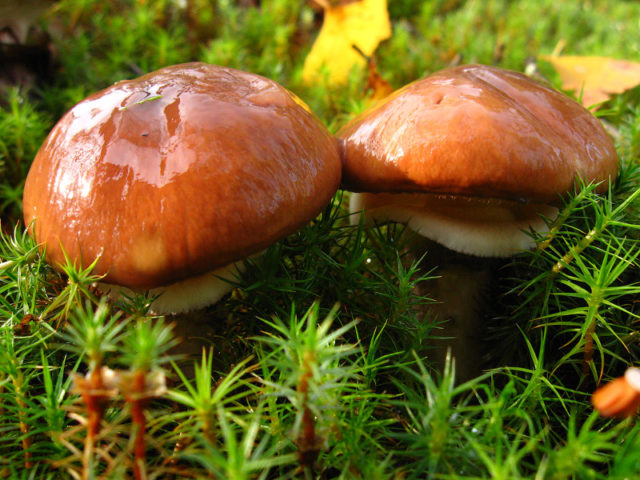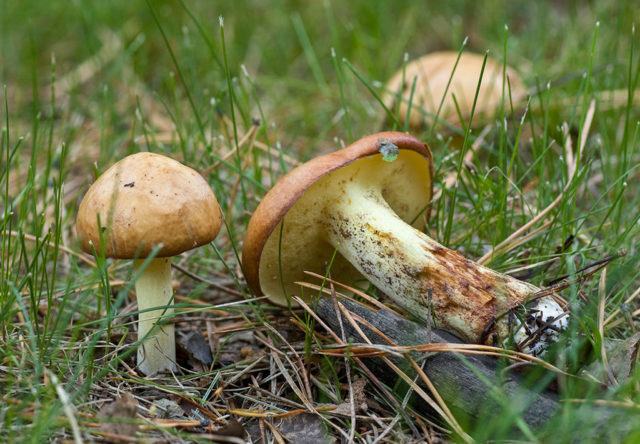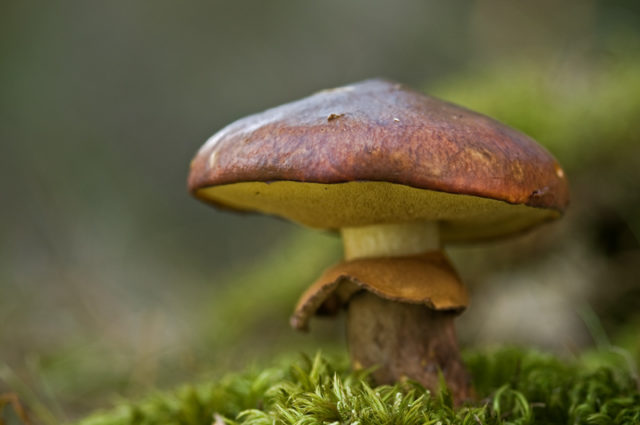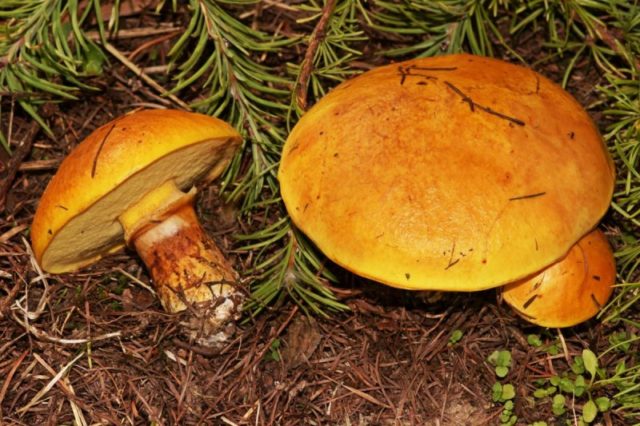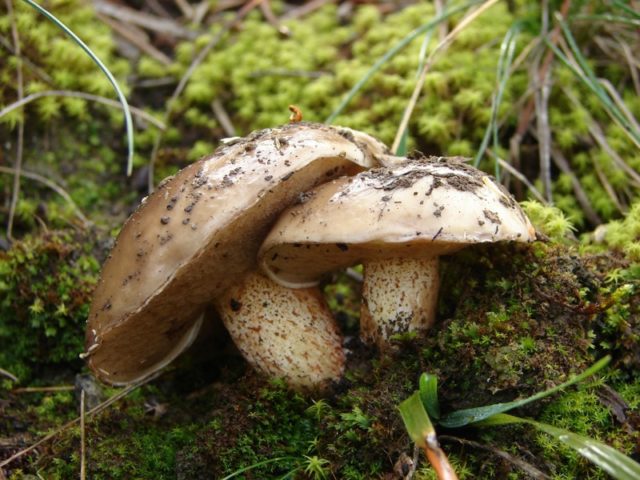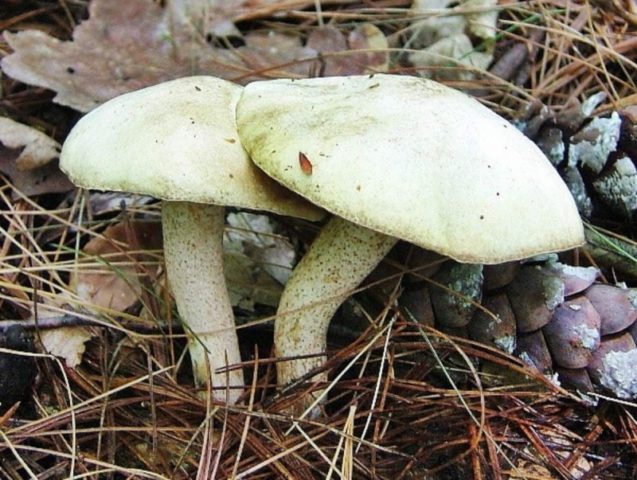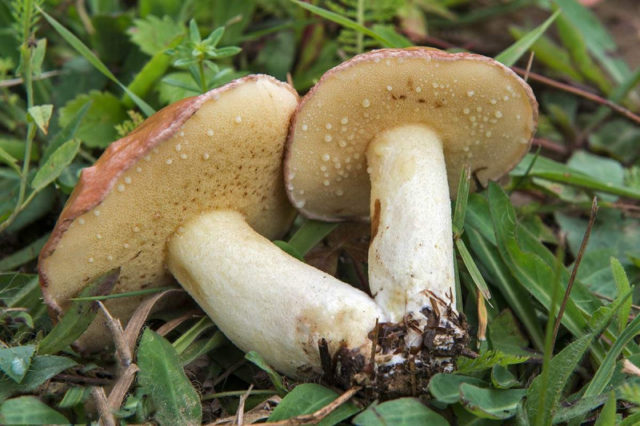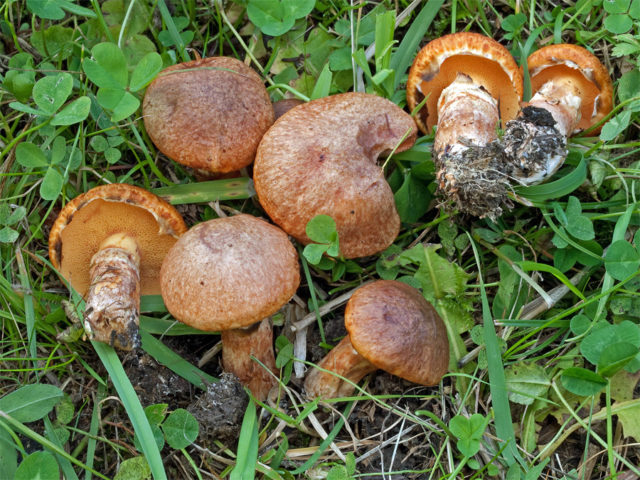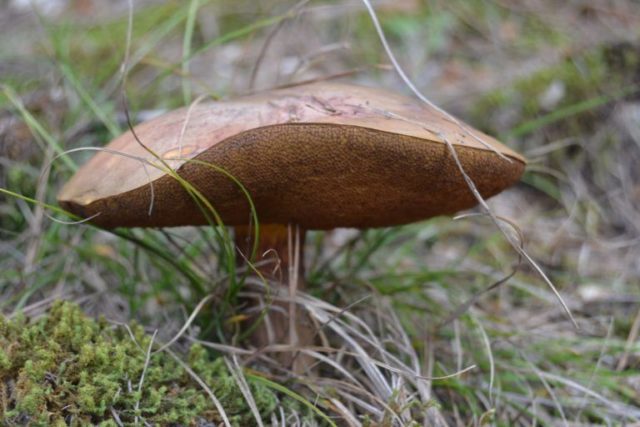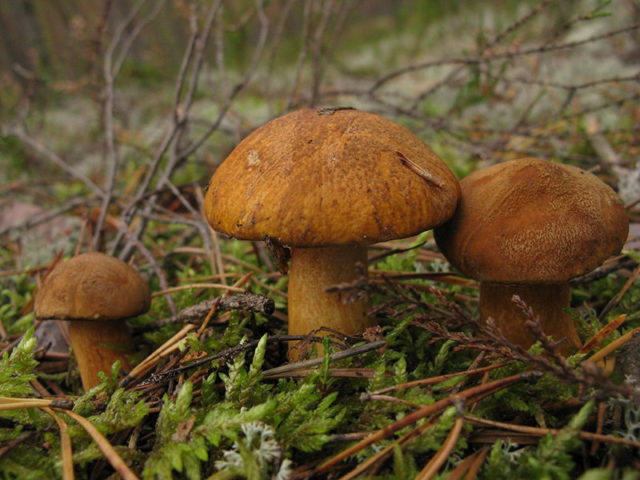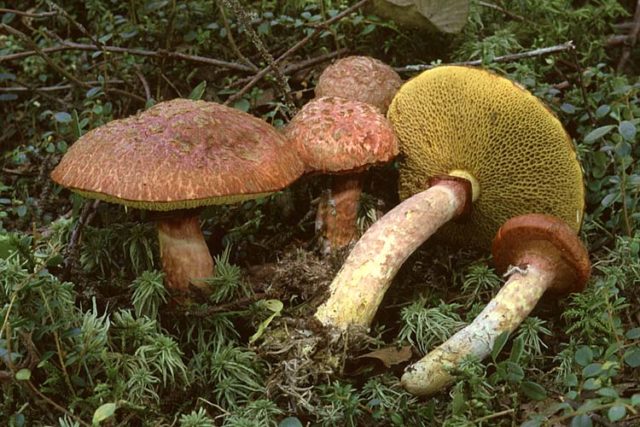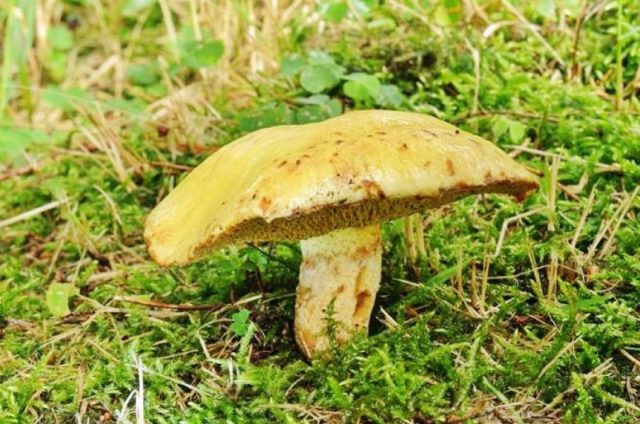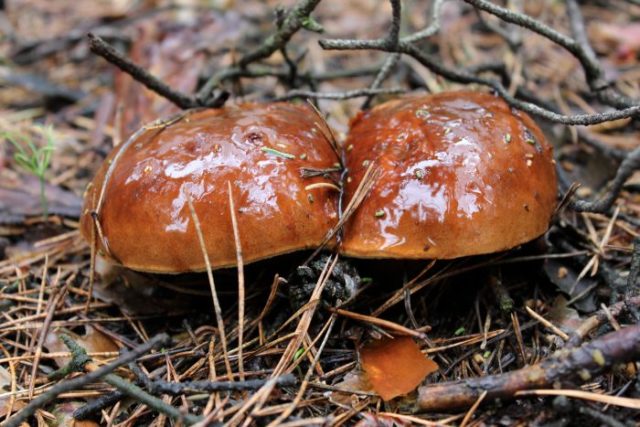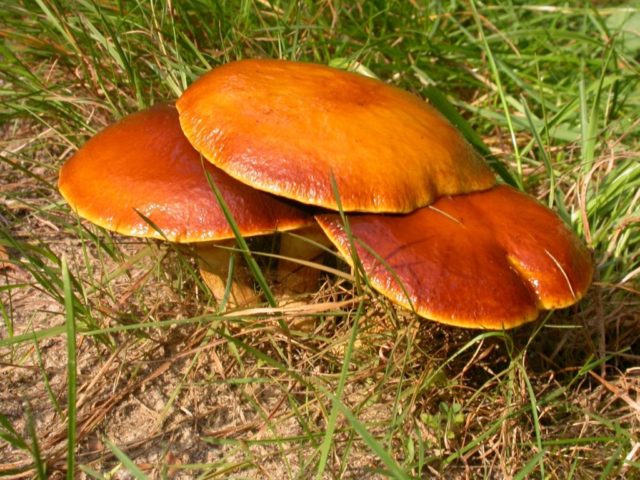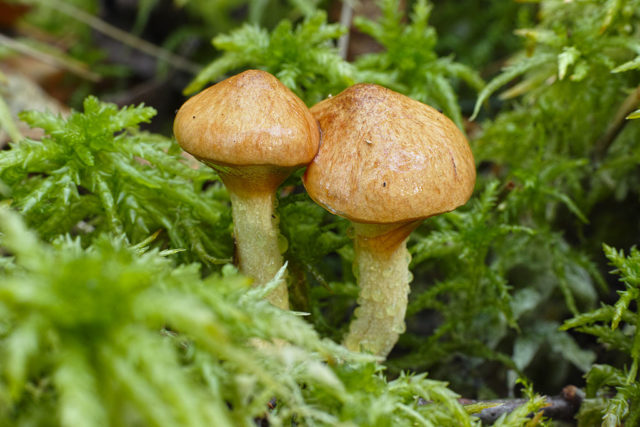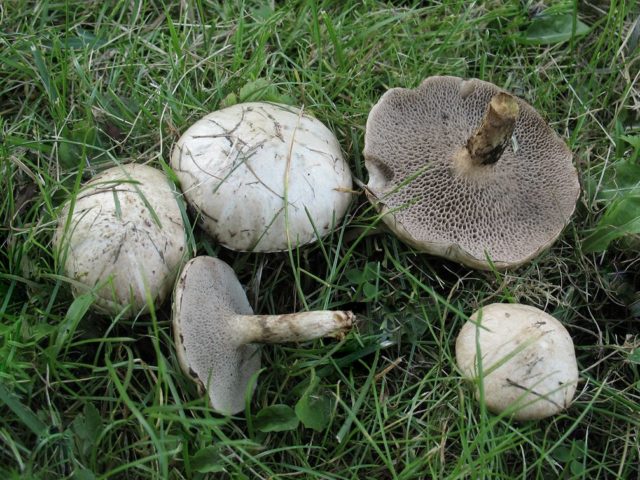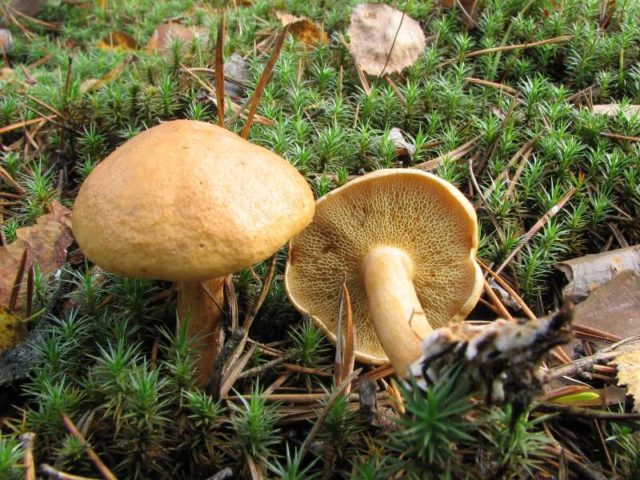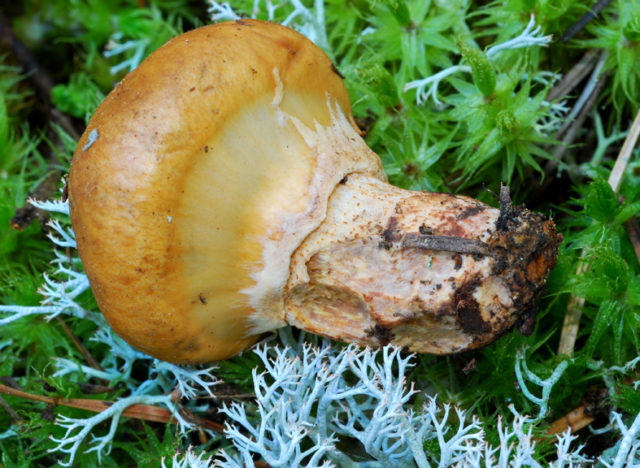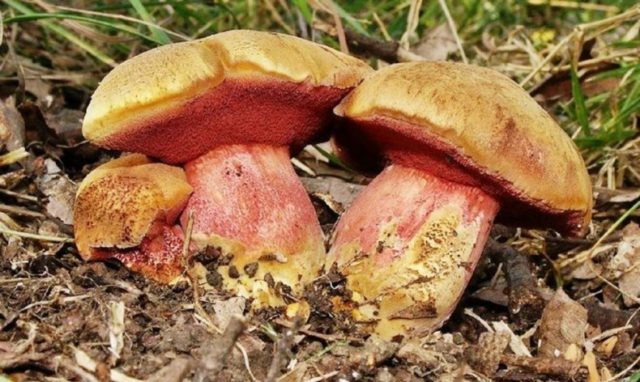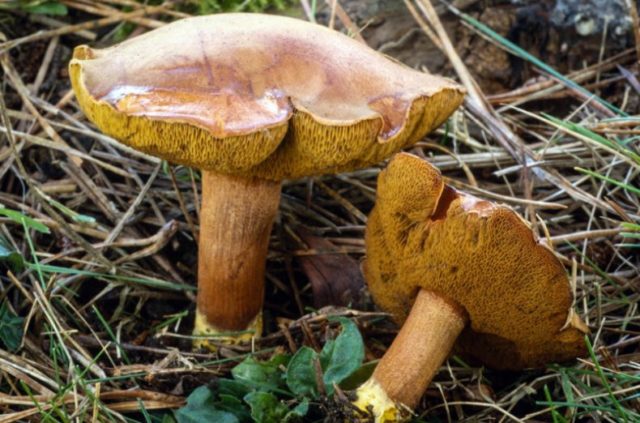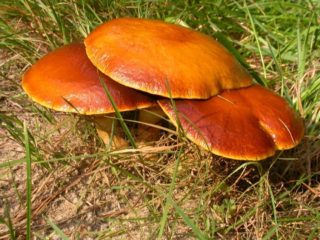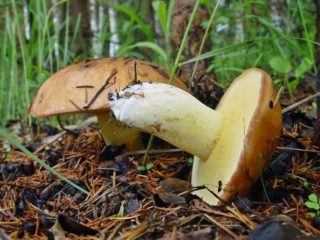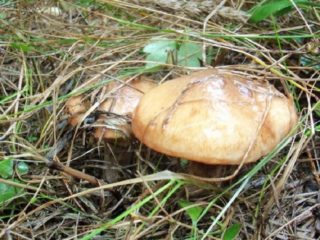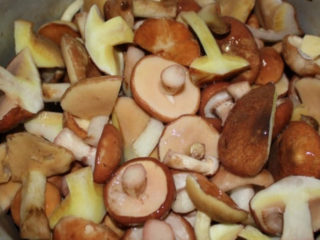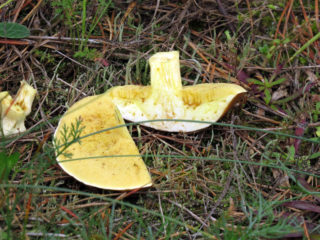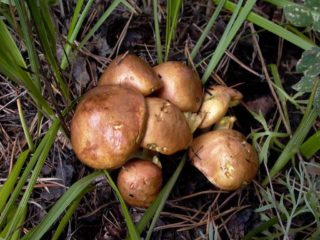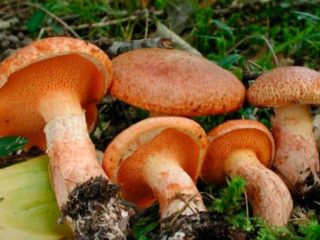Content
Butter mushrooms look very attractive in the photo; they seem appetizing and tasty even in the picture. Closer to autumn, mushrooms appear in forests everywhere; in order to bring a full basket, you need to thoroughly study the existing species.
What does an oiler look like?
The butterdish mushroom looks like a small or medium-sized fungus with a neat tubular-type cap. The lower surface of the cap resembles a sponge, as it consists of many tiny vertical tubes. The stem of the mushroom can be either smooth or granular, often retaining a ring. The pulp is white or slightly yellowish when cut, but during oxidation it becomes bluish or reddish.
The cap is covered with a thin skin, and this is quite traditional for most mushrooms. However, the oil can has an important feature - the skin on its cap is sticky and shiny, often slimy to the touch.
What do fetuses look like?
Photos and descriptions of what the butterdish mushroom looks like demonstrate that young mushrooms that have just emerged from the ground have a very small cone-shaped cap with downward-curved edges. The lower tubular layer of the cap is covered with a thin whitish film, the so-called spathe. Small mushrooms usually have a very shiny and sticky cap, only later the skin dries out a little.
What do young boletus look like?
Fungi that have had time to grow a little, but have not yet begun to age, are easily recognized by the ring on the stem; it remains after the cover on the underside of the cap is torn. As they grow older, the shape of the cap changes; it straightens, although it continues to resemble a very low, gentle cone. The diameter of the cap of an adult young fungus usually does not exceed 15 cm.
What do overgrown boletus mushrooms look like?
Just 7-9 days after birth, the fungi begin to age, their flesh darkens and becomes flabby. The ring of overgrown mushrooms most often falls off, and the skin on the cap of old specimens dries out and may crack.
Why was the oiler called that?
The butterdish mushroom got its name from the unusual sticky skin on the cap with a wet sheen. At first glance, it seems that the mushroom has been coated with oil on top.
It should be noted that this feature is read in the name of the mushroom in different languages. For example, in Germany the fungi are called “butter mushrooms”, in England the butter mushroom is called “slippery Jack”, and in the Czech Republic it is called the butter mushroom.
What kind of mushrooms are boletus?
From the point of view of classification, boletus belongs to the family of the same name and to the order Boletaceae. The fungus belongs to the department of basidiomycetes and belongs to the class of agaricomycetes.
What types of boletus are there?
The Maslenkov genus has about 50 different species. Mushrooms can be divided into 2 groups - completely edible and conditionally edible mushrooms.
Types of edible buttermilk with photos and descriptions
Edible boletus is of greatest interest to mushroom pickers; they have a good taste, many beneficial properties, and are also easy to process before eating. Edible fungi in Russian forests are found in several types.
Ordinary
This edible mushroom is also called late, autumn, true or yellow butterfly. It grows most often in pine forests, and can be found from the beginning of August to the end of September. The fungus is easily recognized by its convex mucous cap of chocolate, red-brown or yellow-brown color. The diameter of the cap does not exceed 12 cm, and the height of the stem is 5-10 cm, and usually it has a ring.
Red-red
In photos of boletus varieties you can often see an edible red-red fungus. It also grows mainly in coniferous forest plantations, and is most often found from mid-July until October.The edible fungus has a large fleshy cap up to 15 cm in diameter, the color of the cap is yellow-orange with red-orange scales. The mushroom rises on a stalk up to 11 cm above the ground, and the stalk is usually almost the same color as the cap or a little lighter.
Bellini
The edible Bellini butterfly mushroom is easily recognized by its dense but short white-yellow stem and light brown cap. The bottom of the cap has a spongy surface of a greenish-yellow color. The rings on the stalk are usually not present in young specimens.
White
White, or pale butterfly, is an edible mushroom that is most often found under cedar and pine trees and can grow in Russian forests from June until November. The diameter of the upper part is standard - up to 12 cm, the cap is covered with mucous skin. The color of the edible white fungus is light yellow; over time, purple spots may appear on the top of the mushroom. The variety is small in size - the mushroom usually rises no more than 8 cm above the ground.
Grainy
An edible oiler called granular has a convex or cushion-like cap - in young specimens it is rusty in color, and in older specimens it is yellow-orange. The fungus rises no more than 8 cm above the ground surface, and the diameter of its upper part does not exceed 10 cm. In dry weather, the skin of the edible fungus is dry and smooth, although after rains it can become slimy. On the top of the stem, droplets of liquid often appear from the pores, and when they dry, the surface of the stem becomes uneven, speckled and grainy.
The edible mushroom grows mainly under pine trees and sometimes under spruce trees; it can be found everywhere from the beginning of summer until November.
Ginger
The red or unringed mushroom has a reddish-red cap and a light yellow spongy layer on its lower surface. In photographs of edible butter mushrooms of this type, it is usually noticeable that the stem retains the remains of a torn cover, but there is no ring as such, hence the second name. Sometimes the stem of the fungus is covered with small wart-like growths.
Cedar
The edible cedar butterfly has a brown cap that is quite large in size - up to 15 cm in diameter. Typically, the surface of the skin at the top of the fungus is not sticky, but as if covered with wax, the color varies from yellow to brownish-orange. The stem of the edible fungus is standard, smooth with a slight narrowing at the top, and can reach 12 cm in height.
Yellow-brown
The yellow-brown butterfly, which is also called the bog moth, moth moth or bog moss, differs from most mushrooms of its type in that it has a scaly rather than a mucous cap. In young fungi, the surface of the skin at the top is covered with thin hairs. The color of the mushroom is usually olive in young specimens and yellow with a reddish or orange tint in adults. The fungus belongs to the category of quite large ones; it can reach 10 cm in height and up to 14 cm in width along the cap.
Notable
Photos of what edible boletus look like include a species called remarkable. It is found most often in wetlands, and can be recognized by the brown tint of the scaly, sticky upper part and the ring on the leg. In this case, the color of the leg in the lower part is brownish-red, and above the ring it is yellowish-white. The fungus can reach 15 cm in diameter, but usually does not rise above 12 cm in height.
Siberian
The edible Siberian fungus usually grows up to 10 cm in width and up to 8 cm in height. Young specimens are straw-yellow in color; as they mature, they become dark yellow with brown spots. Siberian oiler is a fungus with a slimy skin, a ring on the stem and a light fringe along the edges of the cap. This species can be found relatively rarely; it is mainly found in Siberia in mountainous areas near pine trees.
Girded
Edible butterflies of this species most often grow next to larch and have a dark color - dark chestnut or red-brown. The fungus can grow up to 12 cm, reaching about 15 cm in width; a ring usually remains on the stem. On the cut of the stem the flesh is light brown, and inside the cap it is yellow-orange and fleshy.
Photos and descriptions of conditionally edible boletus mushrooms
In Russian forests you can find not only edible, but also conditionally edible boletus. This means that, in principle, mushrooms are not toxic, but in their raw form they have an unpleasant bitter and acrid taste and can cause poisoning.
Photos and descriptions of boletus mushrooms of the conditionally edible category should be carefully studied. They must be processed very carefully before use - soaked, boiled for a long time. In this case, they will no longer pose a danger to digestion, and the taste will noticeably improve.
Larch
The conditionally edible fungus is easily recognized by its bright yellow or bright orange color. At the same time, not only the tops, but also the legs of fungi of this species can boast bright colors. Larch fungi emit a pleasant aroma, but they can be used in cooking only after long processing.
Bolotny
The mushroom can be recognized by its dirty yellow or ocher top with a tubercle in the center and sticky skin.The stem of the conditionally edible fungus is thin and yellow, usually with a ring, and the cut flesh is light lemon in color. When exposed to oxygen, the pulp acquires a reddish tint.
Grey
Gray or bluish larch boletus is characterized by a gray-yellow or light gray color, average size for boletus and a whitish ring on the stem. The flesh of the fungus becomes bluish when cut.
Kozlyak
Butterflies of the goat species, which are also called mullein or mullein, are usually orange-brown or reddish-brown and reach only up to 11 cm in width. The stem of the fungus is the same color as the top; there is usually no ring. Most often, the conditionally edible species is found in swampy areas. The white-yellow pulp of the fungus is suitable for consumption, but has a sour taste and therefore requires careful pre-processing.
Yellowish
Mushrooms of this species are conditionally edible and are very common in forests with sandy soils. You can recognize the species by the orange-brown or ocher hue of its small hat, up to 6 cm in diameter. Usually, a dense ring remains on the stem of the fungus - white in young specimens and purple in adults. The skin of this species, when eaten, causes stomach upset, so it must be removed and the pulp thoroughly boiled.
Ruby
The ruby butternut variety is distinguished by its light brown top and thick pink stem, sometimes quite rich. The tubular layer on the underside of the hat is also pink in color.Before consuming this species, mushrooms must be peeled and properly boiled to eliminate the unpleasant aftertaste.
Peppery
Perchaks, or pepper butter, are very small in size - up to 6 cm in height and up to 5 cm in width. The entire fungus is completely colored in brown shades, only the cut stem is yellow with a slight reddish tint. Pepper fungi get their name because of their very pungent taste. They are allowed to be eaten, but only after prolonged drying or soaking and in small quantities. This species is usually used as a spice for various dishes.
Interesting facts about boletus
The neat little fungi have some unique features. Namely:
- The photo of butterdish in the forest shows that most often they grow in whole colonies - they can rarely be found alone, usually there are others very close to one butterdish;
- They are suitable for food mainly at a young age - old boletus is often affected by worms;
- when cleaning, they leave brown sticky spots on the skin, so it is better to remove the skin from fungi while wearing thin gloves;
- can cause severe allergies - if you are predisposed to allergic reactions, it is better to use them with caution.
Interestingly, fungi grow not only in Eurasia and the American continents, but even in Africa. It is believed that they were brought to hot countries in the Middle Ages along with pine trees. However, the local population rarely eats them - African residents consider these fungi to be poisonous.
Conclusion
The boletus mushrooms in the photo can be found in many varieties.There are no poisonous species in this family, so theoretically any of the butter beans can be used as food, but some require special processing.
